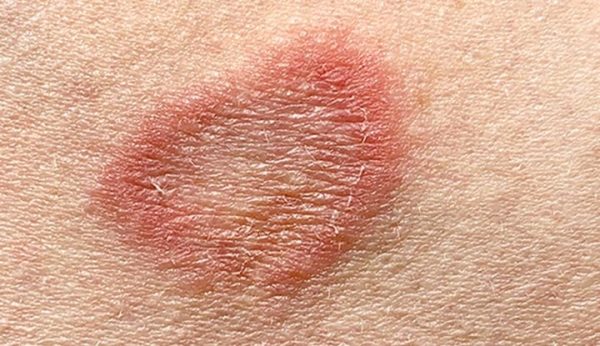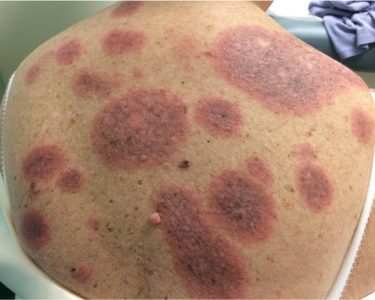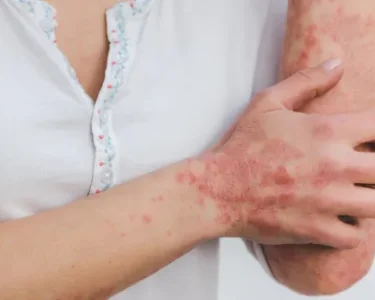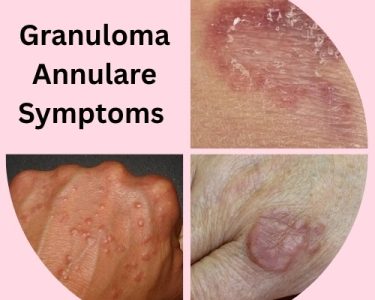Ringworm type appearances of bumps (Granuloma Annulare)
Ringworm type appearances of bumps, is a condition of granuloma annulare, is a common skin condition that is characterized by raised, circular lesions on the skin. These lesions are usually red but can appear as light yellow or brown. They are most commonly found on the hands, arms, and legs but can appear in other areas as well. This condition is often harmless and does not require medical treatment. However, if the rash persists or the patient experiences discomfort or itching due to ringworm type appearances of bumps, there are various treatments available to alleviate these symptoms.
Symptoms of Ringworm type appearances of bumps
Ringworm type appearances of bumps, a common fungal infection, doesn’t involve actual worms but rather causes a ring-like appearance of bumps or rashes on the skin. Here are some typical symptoms of ringworm:
- Red, Circular Rash: Ringworm often presents as a red or pink circular rash on the skin. The center of the rash may appear healthy, while the edges are raised, scaly, and may be slightly inflamed.
- Itching: The affected area can be itchy, which can lead to scratching, potentially causing the rash to spread.
- Clearing Center: The center of the ringworm rash may start to clear as it enlarges, creating a ring-like appearance. This is where the term “ringworm” comes from.
- Blisters or Pustules: In some cases, ringworm can cause small blisters or pustules within the rash. These may be filled with fluid or pus.
- Scaling and Peeling: The outer edges of the rash often become scaly, dry, and may even peel. This is more common in cases that have been present for some time.
- Hair Loss: When ringworm affects the scalp, it can lead to hair loss in the affected areas. This condition is known as tinea capitis.
- Nail Changes: Ringworm can also affect the nails, causing them to become discolored, thickened, or brittle. This condition is called tinea unguium.
- Jock Itch and Athlete’s Foot: Ringworm can also affect the groin and feet, leading to conditions known as jock itch and athlete’s foot, respectively. These infections cause similar circular rashes and discomfort.
It’s essential to seek medical attention if you suspect you have ringworm type appearances of bumps, as antifungal medications are typically needed to treat it effectively. Avoiding contact with infected individuals and practicing good hygiene can also help prevent its spread and enjoy you healthy lifestyle.
Causes of Ringworm type appearances of bumps
Ringworm type appearances of bumps, is a fungal infection of the skin that can cause a ring-like appearance of bumps or a circular rash. However, there are several other conditions and factors that can result in ringworm-type appearances of bumps on the skin. Some of these causes include:
- Tinea Infections: Various types of tinea infections can mimic the appearance of ringworm. These include tinea corporis (body), tinea cruris (groin), and tinea faciei (face). They are caused by different types of dermatophyte fungi and can result in circular, red, itchy rashes on the skin.
- Eczema (Dermatitis): Eczema is a chronic skin condition characterized by red, itchy, and inflamed skin. In some cases, eczema can present with circular or ring-like patterns, which may resemble ringworm. These patches can occur due to the way eczema lesions spread.
- Contact Dermatitis: Contact dermatitis occurs when the skin comes into contact with an irritant or allergen. It can lead to red, itchy, and sometimes ring-shaped rashes, which can be mistaken for ringworm.
- Granuloma Annulare: This is a chronic skin condition that results in raised, ring-shaped bumps or plaques on the skin. It is not caused by a fungal infection but rather an immune system response.
- Psoriasis: Psoriasis can sometimes present as round or ring-like plaques with silvery scales on the skin, which may be mistaken for ringworm. Psoriasis is an autoimmune skin condition.
- Drug Reactions: Some drug allergies or hypersensitivity reactions can manifest as circular rashes or hives on the skin, which might mimic ringworm.
- Insect Bites: Certain insect bites, like those from ticks or spiders, can cause red, circular rashes or raised bumps that may look similar to ringworm.
- Other Fungal Infections: Aside from dermatophyte fungi that cause ringworm, other fungal infections can also lead to similar skin symptoms, sometimes appearing as circular rashes or bumps.
Treatments for Ringworm type appearances of bumps
The term “ringworm” is often used to describe a fungal skin infection, but other skin conditions can resemble it. Here are some common treatments and recommendations for ringworm type appearances of bumps and similar-looking skin conditions:
Antifungal Creams:
For actual ringworm, over-the-counter antifungal creams such as clotrimazole, terbinafine, or miconazole can be effective. Apply these creams to the affected area as directed.
Prescription Medications:
In some cases, a doctor may prescribe stronger antifungal medications in the form of creams, oral pills, or even injections, depending on the severity of the infection.
Keep the Area Clean and Dry:
Regardless of the condition, keeping the affected area clean and dry is essential for recovery. Cleanse the area with mild soap and water, pat it dry, and avoid moisture buildup.
Topical Steroids:
If there is inflammation and itching, a doctor may recommend topical steroids to reduce these symptoms. However, steroids should only be used as directed by a healthcare professional.
Avoid Sharing Personal Items:
Prevent the spread of any skin condition by not sharing personal items like towels, clothing, and sports equipment.
Isolation and Hygiene:
If the condition is indeed a contagious fungal infection, it’s important to practice good hygiene and isolate the affected individual to prevent the spread of the infection to others.
Oral Antihistamines:
Over-the-counter oral antihistamines like loratadine or cetirizine can help relieve itching and discomfort caused by skin conditions.
Home Remedies:
Some home remedies, such as applying apple cider vinegar, tea tree oil, or garlic, have been suggested for treating fungal skin infections. However, their effectiveness is not well-documented, and it’s crucial to consult with a healthcare professional before trying these remedies.
Preventative Measures:
To avoid recurrent infections or prevent their occurrence, maintain good personal hygiene, wear breathable clothing, and avoid excessive sweating in susceptible areas and eat balanced diet to improve your overall health and well-being.
Remember that accurate diagnosis is crucial for appropriate treatment of ringworm type appearances of bumps. Do not self-diagnose and always seek guidance from a healthcare professional. Additionally, these recommendations are general in nature, and your specific treatment may vary based on the diagnosis and the severity of the condition.
Herbal Supplements for Ringworm (Granuloma Annulare)
Ringworm type appearances of bumps can be a symptom of Granuloma Annulare, a skin condition that can cause red or yellow raised patches on the skin. This condition is usually harmless although it can be uncomfortable or embarrassing. Herbal supplements for Granuloma Annulare have been used to treat ringworm type appearances of bumps by providing antioxidant and anti-inflammatory benefits.
Conclusion
When it comes to Ringworm type appearances of bumps, it is important to know the symptoms and the treatment options available. Granuloma Annulare is one such example of a Ringworm type bump that can be treated with herbal supplements such as silica, copper, zinc and vitamin E. It is always best to consult with your doctor to determine the right kind of treatment for your particular condition. Additionally, if you are using herbal supplements for Granuloma Annulare or any other Ringworm type appearance bump, make sure that you use high-quality products and take them as directed for best results.




